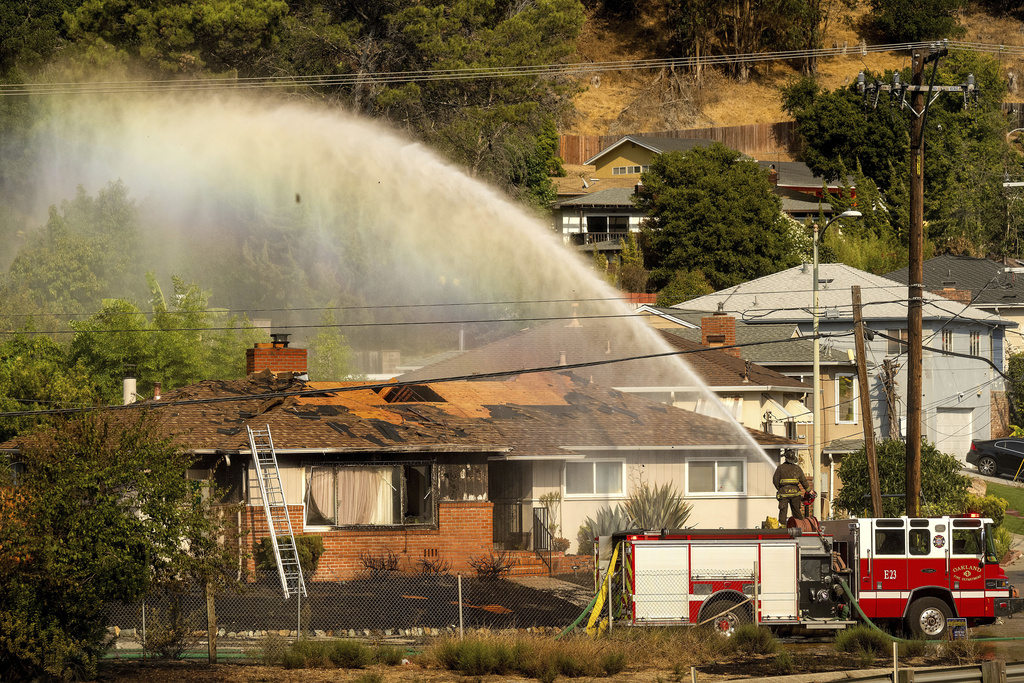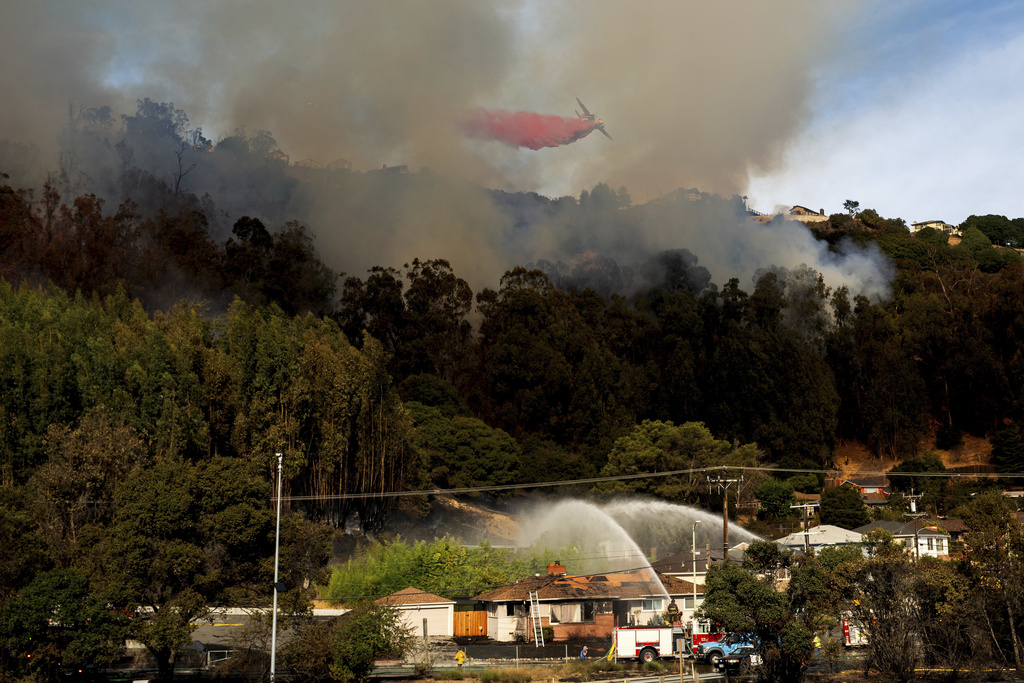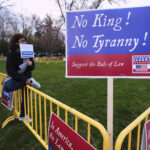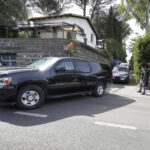Oakland Fire Forces Evacuations as Diablo Winds Spread Blaze \ Newslooks \ Washington DC \ Mary Sidiqi \ Evening Edition \ A fast-moving fire in Oakland, California, burned at least seven homes on Friday, forcing the evacuation of hundreds of residents as crews scrambled to contain the blaze. The fire erupted in a hillside neighborhood near the 580 Freeway, causing traffic jams and spreading smoke across the city of 440,000 people. The cause of the fire has not yet been determined.

Fire in Oakland Forces Evacuations Amid Red Flag Warnings – Quick Looks:
- Evacuations ordered: Hundreds of Oakland residents were evacuated as a fire spread rapidly through a hillside neighborhood.
- Firefighting efforts: Crews stopped the fire’s advance at 13 acres, with aerial and ground support.
- Traffic gridlock: Smoke and emergency vehicles caused traffic jams on the 580 Freeway.
- Red flag warnings: Fire danger warnings were in place statewide due to high winds and dry conditions.
Deep Look:
Evacuations and Firefighting Efforts:
Oakland Fire Department spokesperson Michael Hunt said that while an exact number of evacuees was not available, it was estimated that hundreds of residents had been told to leave the area as a precaution. Fire crews worked tirelessly to contain the fire, aided by aerial support from the California Department of Forestry and Fire Protection, which deployed aircraft to drop fire retardant over the burning area.
The fire’s location near the busy 580 Freeway, a major route connecting the San Francisco Bay Area to central California, led to traffic congestion as residents attempted to flee the area. Smoke billowed over the city, and visibility was impacted for miles. Several westbound lanes on the freeway were temporarily closed to allow emergency vehicles through. Firetrucks and ambulances struggled to navigate the gridlocked traffic, with sirens blaring as they raced toward the scene.
A Familiar Threat in Oakland:
The fire, which erupted in the Oakland hills, brought back memories of the devastating 1991 wildfire in the same region that destroyed nearly 3,000 homes and claimed 25 lives. Although this fire was contained more quickly, the threat of wildfires remains a persistent concern for residents living in the fire-prone hills of Northern California.
Statewide Red Flag Warnings:
Winds in the Bay Area were forecast to reach sustained speeds of 35 mph, with gusts as high as 65 mph along mountaintops. These conditions, combined with low humidity, dried out vegetation, making the area highly susceptible to wildfires.
In response to the heightened fire danger, Pacific Gas and Electric (PG&E) preemptively shut off power to approximately 16,000 customers across 19 counties in Northern and Central California, including Alameda, Contra Costa, Napa, Solano, and Sonoma counties. PG&E said that up to 20,000 customers could face power outages over the coming days as the wind event continued.
Southern California Fire Risk:
Meanwhile, Southern California was also bracing for fire danger as Santa Ana winds picked up across the region. The Los Angeles County Fire Department reported a brush fire in the Hacienda Heights area, which threatened homes in the surrounding neighborhoods. The fire, which had grown to 5 acres by late afternoon, prompted an aggressive response from firefighters on the ground and in the air. Fortunately, no evacuations were ordered, and crews were working to prevent the fire from spreading.
The National Weather Service issued red flag warnings for the valleys and mountains of Los Angeles County, as well as parts of the Inland Empire and the San Bernardino Mountains. The Santa Ana winds, characterized by their dry, gusty conditions, are expected to reach speeds of 25 to 40 mph in the region, with gusts as high as 60 mph in mountainous areas.
Meteorologist Mike Wofford from the weather service’s Los Angeles-area office noted that while the winds in Southern California weren’t as strong as those up north, the dry conditions and gusts still posed a significant fire risk.
Impact on Northern California:
The fire’s rapid spread was aided by the dry, windy conditions typical of the diablo winds, which occur when high-pressure systems form over the West. These winds blow from inland areas toward the coast, drastically lowering humidity levels and drying out vegetation, creating prime conditions for wildfires.
The name “diablo” — Spanish for “devil” — reflects the ferocity of these winds, which are notorious for fanning the flames of deadly wildfires in California’s history.
Other Weather Events:
While fires burned in both Northern and Southern California, the Sierra Nevada region around Lake Tahoe experienced lighter weather, with some areas receiving light snowfall overnight. The National Weather Service reported wind gusts of up to 104 mph in peaks west of Lake Tahoe, though these winds were expected to taper off by Saturday morning.
The service also issued its first freeze warning of the season along the eastern front of the Sierra, with temperatures expected to dip into the low 20s Fahrenheit (-5 Celsius). The freeze warning extended from Carson City to Reno and Plumas County in California.
Conclusion:
As red flag warnings persist across California, the state remains on high alert for potential wildfires. The fast-moving fire in Oakland, fueled by diablo winds, serves as a reminder of the ongoing wildfire threat in the region. While crews were able to stop the fire from advancing, the destruction of homes and forced evacuations highlight the dangers posed by these extreme weather conditions.
With fire crews battling blazes in both Northern and Southern California, residents are urged to remain vigilant and follow evacuation orders as the wind event continues through the weekend.







